In the murky waters of tropical rainforests and swamps, a remarkable evolutionary adaptation has developed in one of nature’s most cunning predators. The fishing snake, specifically the tentacled snake (Erpeton tentaculatum), has evolved a fascinating strategy that mimics the art of human fishing. Unlike conventional hunters that actively pursue their prey, this specialized reptile employs a sophisticated form of ambush hunting by using its tail as bait to lure unsuspecting fish within striking distance. This remarkable example of convergent evolution demonstrates how nature’s ingenuity can produce hunting techniques that parallel human methods, despite evolving completely independently. The fishing behavior of these specialized snakes offers a captivating glimpse into the complex world of predator-prey relationships and the extraordinary adaptations that emerge in competitive ecosystems.
The Master of Aquatic Deception

The tentacled snake has perfected a hunting technique so sophisticated that it requires careful coordination of multiple body parts and precise timing. Positioning itself in an unusual J-shaped stance, the snake remains motionless for extended periods, sometimes hours, while its tail moves in subtle undulations that mimic the movements of small aquatic organisms like worms or insect larvae. This carefully choreographed deception creates an irresistible lure for hungry fish that mistake the tail for an easy meal. What makes this behavior even more remarkable is the snake’s ability to maintain this rigid posture while completely submerged, often anchoring itself to underwater vegetation with other parts of its body to enhance stability. The entire hunting sequence represents one of the most specialized predation strategies in the reptile world.
Anatomy of a Fishing Expert
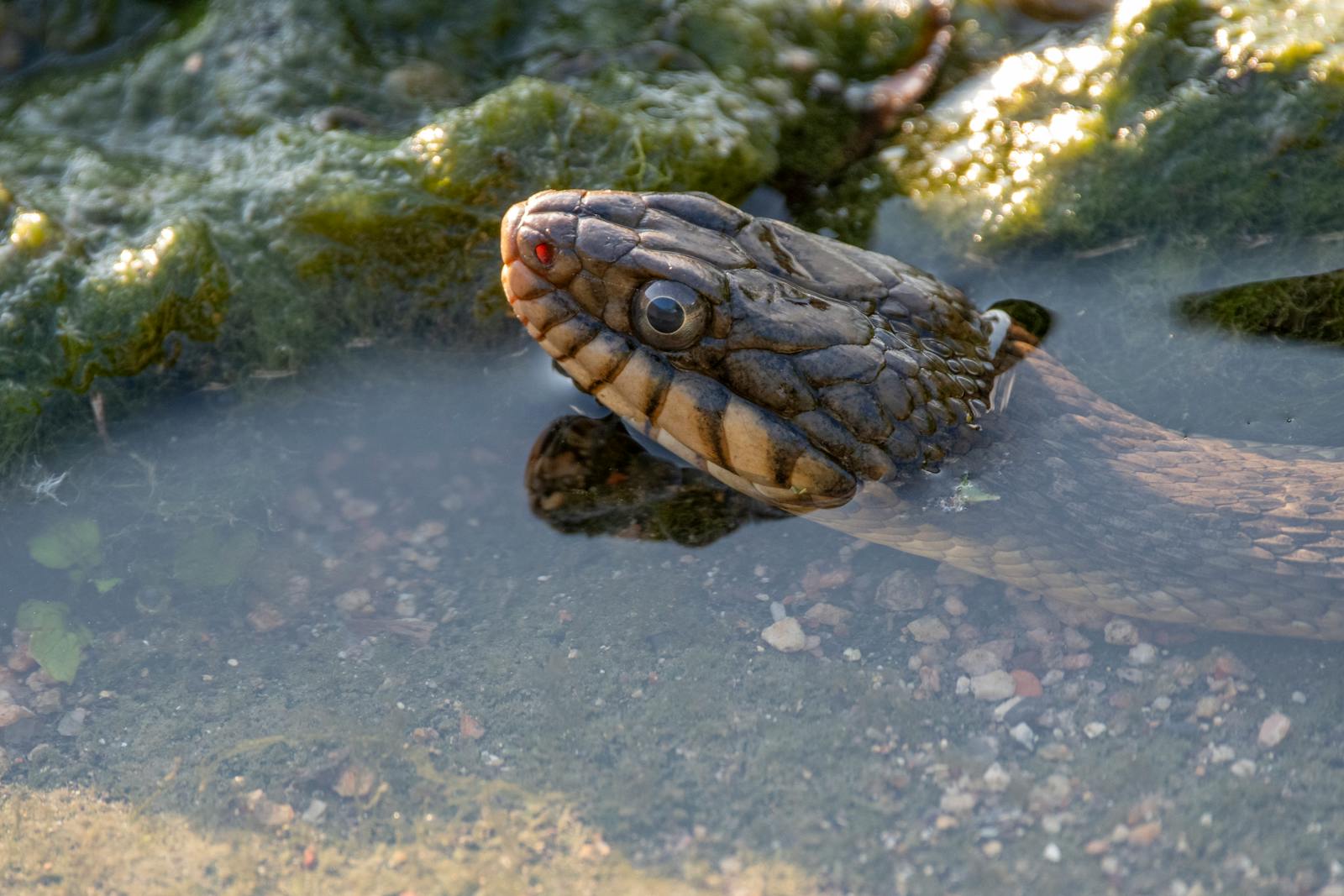
Evolutionary adaptations have perfectly equipped the tentacled snake for its unique fishing lifestyle. Its most distinctive features are the pair of tentacle-like sensory appendages that protrude from its snout, which function as highly sensitive mechanoreceptors that detect minute water movements generated by approaching fish. The snake’s body is typically brownish or grayish, providing excellent camouflage against the muddy substrates of its aquatic habitat. Unlike many terrestrial snakes, the tentacled snake has a flattened tail that allows for precise movements in water while maintaining stability. Additionally, its scales are uniquely keeled and rough-textured, helping it blend perfectly with submerged branches and aquatic vegetation while providing additional sensory input about its surroundings. These anatomical specializations work in concert to create a perfectly adapted aquatic ambush predator.
The Predictive Strike: A Computational Marvel
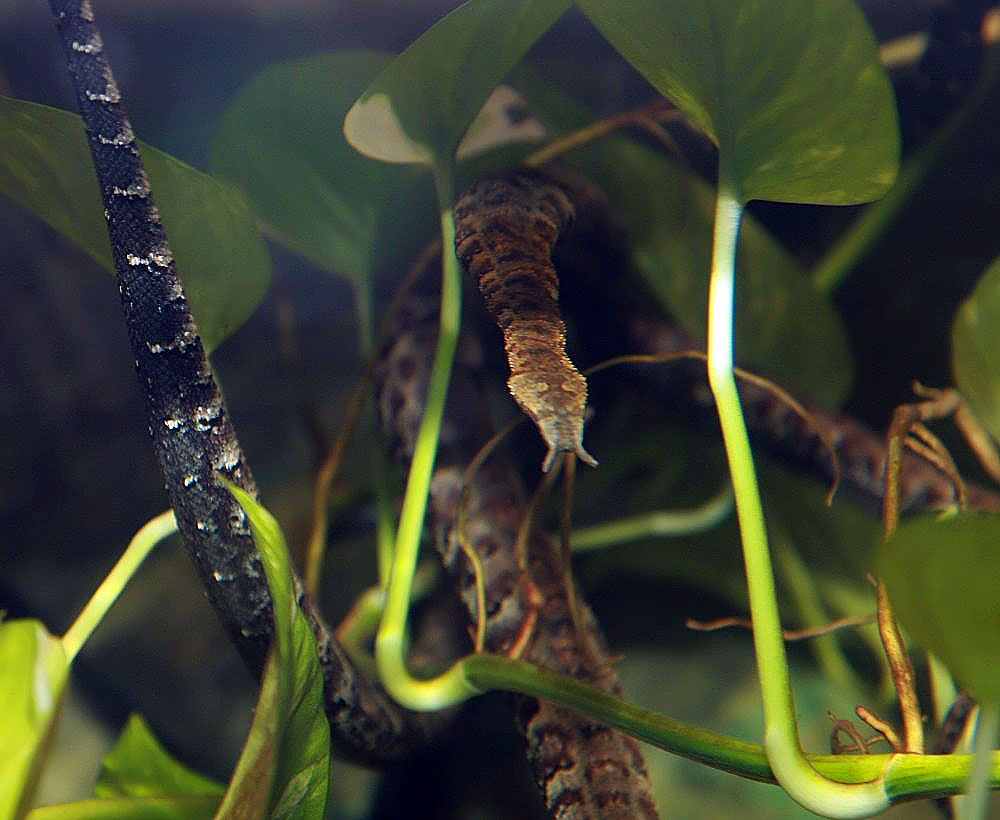
What truly sets the tentacled snake apart is not just its bait-like tail movements but the computational sophistication of its strike. Research has revealed that these snakes don’t simply strike at where a fish is located but rather at where the fish will be in the milliseconds following the initial attack. The snake has evolved to understand and exploit a predictable escape response in fish called the C-start, where the fish bends its body into a C-shape to rapidly change direction when startled. In a remarkable display of predictive modeling, the tentacled snake aims its strike not at the fish’s current position but at the location where the fish’s momentum will carry it after executing this escape response. This anticipatory strike represents one of the most sophisticated hunting calculations observed in the reptile kingdom and demonstrates how millions of years of evolution can produce computational abilities that rival computer algorithms.
Habitat and Distribution
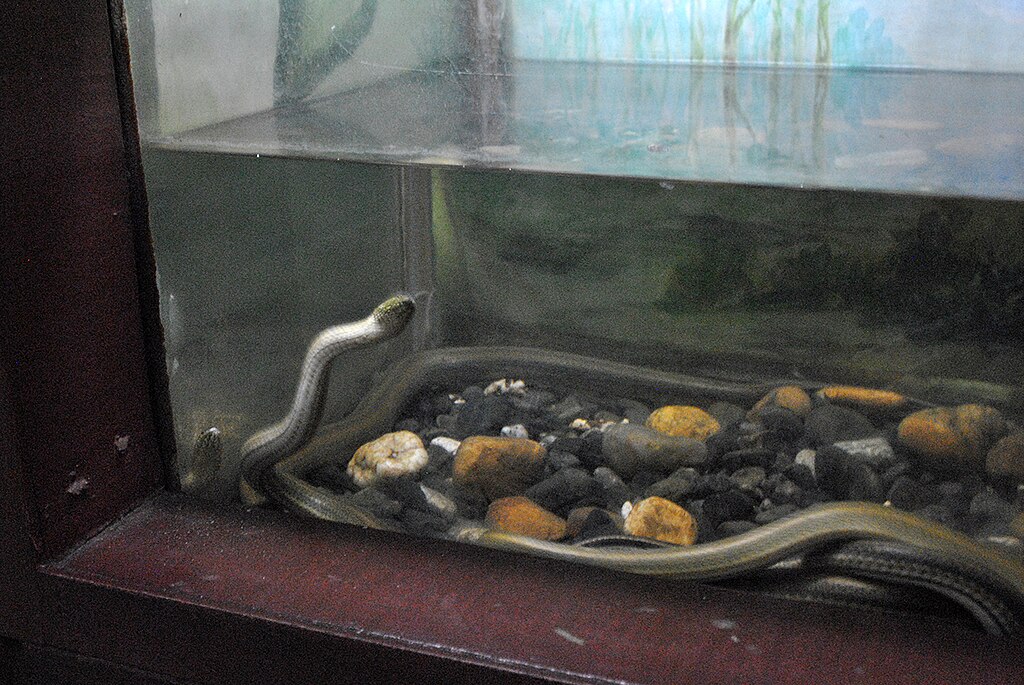
Tentacled snakes are exclusively found in the freshwater systems of Southeast Asia, particularly throughout Thailand, Cambodia, Vietnam, and parts of Indonesia. They show a strong preference for slow-moving or stagnant bodies of water with abundant vegetation, including rice paddies, swamps, marshes, and sluggish rivers. These habitats provide the perfect hunting grounds where the snake can remain camouflaged among aquatic plants while scanning for potential prey. Unlike many semi-aquatic snakes that must occasionally return to land, tentacled snakes are almost entirely aquatic, rarely if ever leaving the water. Their distribution is closely tied to specific water conditions, including temperature ranges between 75-86°F (24-30°C) and relatively turbid water that helps conceal their presence from prey species. These specialized habitat requirements make them particularly vulnerable to environmental changes affecting freshwater ecosystems.
Evolutionary Origins of Tail Fishing
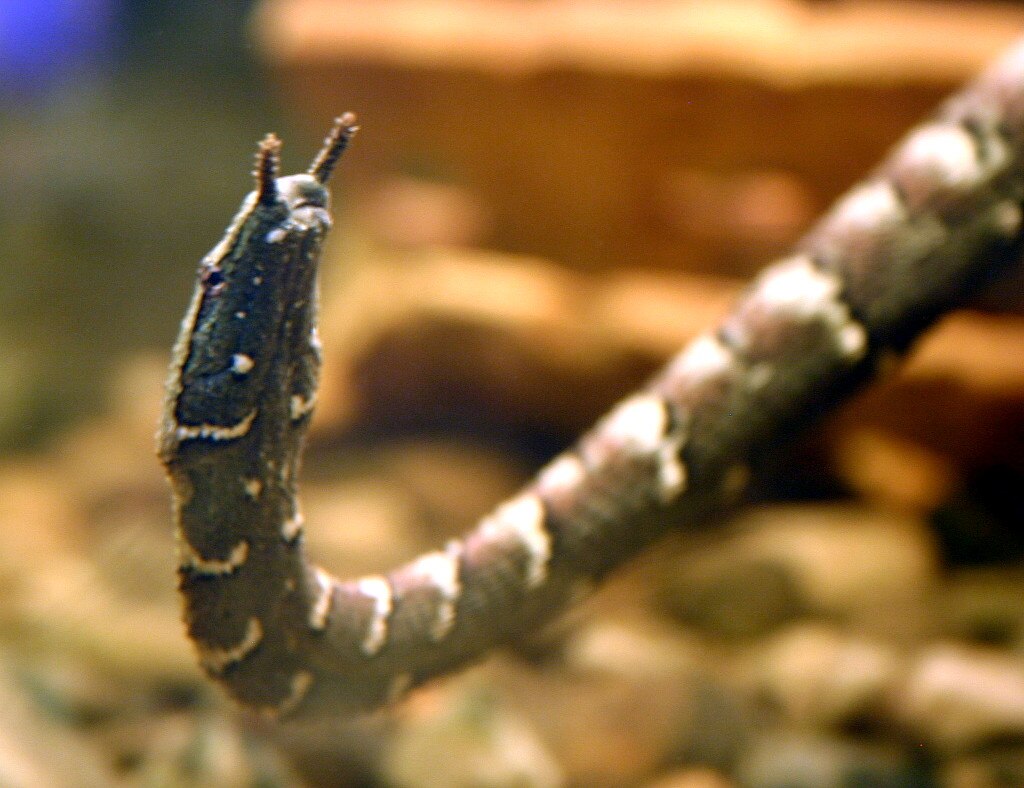
The evolution of tail fishing behavior represents a fascinating example of specialized adaptation that likely developed over millions of years. Scientists believe this behavior emerged as a response to specific ecological pressures in aquatic environments where competition for food resources was intense. The earliest ancestors of fishing snakes probably exhibited simple tail movements that coincidentally attracted fish, providing a selective advantage that was reinforced over countless generations. Genetic analysis suggests that the tentacled snake diverged from other homalopsid water snakes approximately 20 million years ago, developing its specialized morphology and behavior in isolation. The remarkable parallelism between this evolved strategy and human fishing techniques represents a perfect example of convergent evolution, where similar functional solutions emerge independently in response to comparable environmental challenges. This evolutionary history underscores nature’s remarkable ability to produce specialized adaptations that maximize predatory success.
The Fishing Technique in Detail

The tentacled snake’s fishing technique follows a precise sequence that has been refined through evolutionary trial and error. First, the snake assumes its characteristic J-position, with its head and neck forming the hook of the J and its body anchored to vegetation or substrate. From this position, it begins subtle undulations of its tail tip, creating movements that mimic small invertebrates. These movements generate specific water displacement patterns that attract fish through both visual and lateral line detection systems. When a fish approaches the lure, the snake remains perfectly still except for the tail, avoiding triggering premature escape responses. The moment the fish comes within striking range—typically 2-3 centimeters—the snake executes its attack by creating a slight body movement that startles the fish into its predictable C-start escape response. This entire hunting sequence demonstrates remarkable behavioral complexity and showcases the snake’s specialized adaptations for aquatic predation.
Unique Respiratory Adaptations
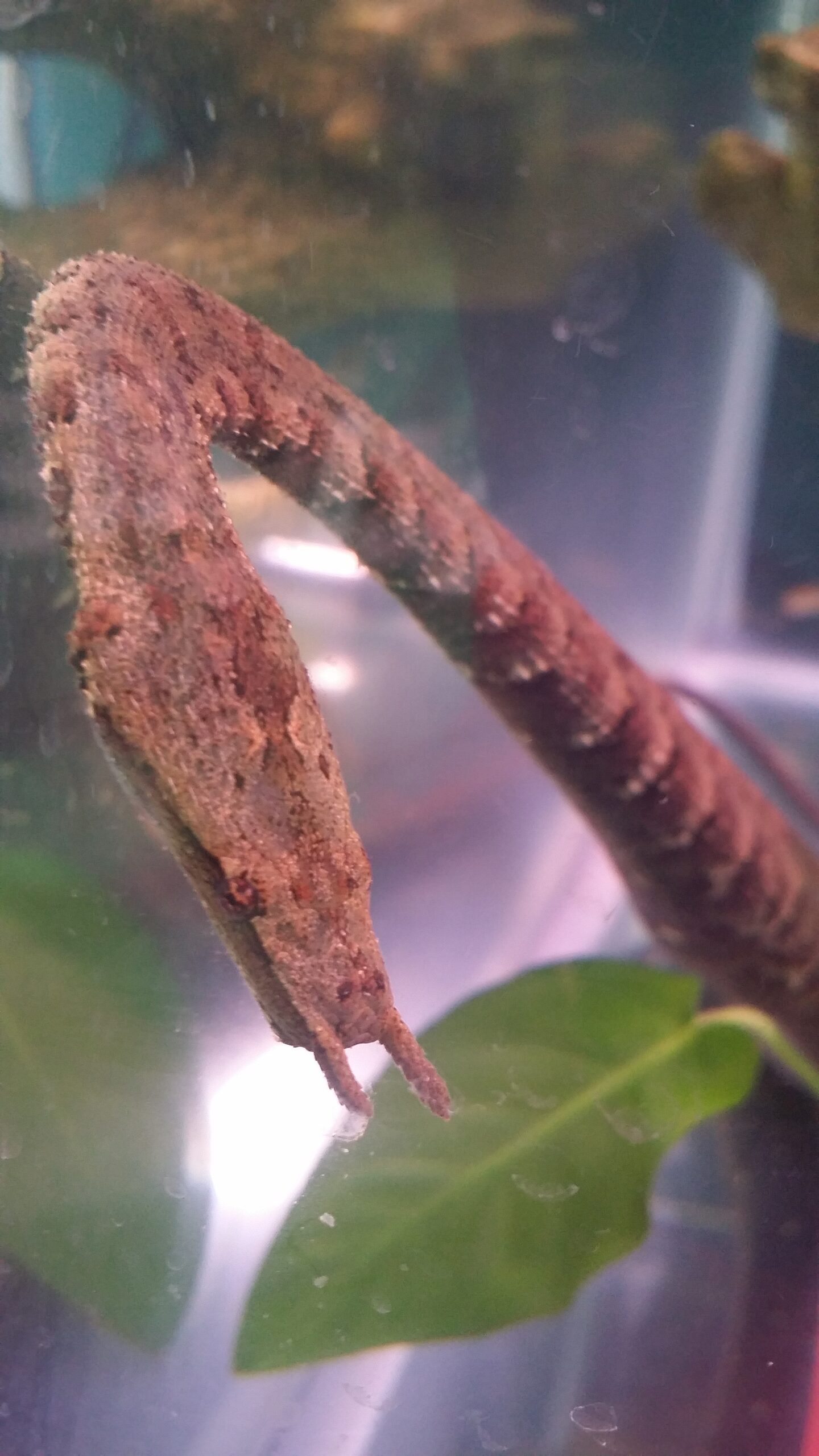
To support its fully aquatic lifestyle and extended hunting sessions, the tentacled snake has developed extraordinary respiratory adaptations that far surpass those of semi-aquatic reptiles. The snake can remain submerged for up to 30 minutes without surfacing for air, thanks to specialized lung structures that extend nearly the entire length of its body, providing exceptional oxygen storage capacity. Additionally, these snakes can absorb up to 25% of their oxygen requirements directly through their skin through a process called cutaneous respiration, similar to amphibians. Their metabolic rate also slows dramatically during hunting, reducing oxygen consumption while waiting for prey. Perhaps most remarkably, tentacled snakes possess specialized sensory cells that can detect changes in water oxygen content, allowing them to locate areas with higher dissolved oxygen when needed. These respiratory adaptations collectively enable the prolonged underwater hunting sessions necessary for their specialized fishing technique.
Diet and Prey Selection

The tentacled snake maintains a highly specialized diet consisting almost exclusively of fish, with occasional consumption of amphibians and crustaceans. Research has identified specific prey preferences for smaller fish species that exhibit strong C-start escape responses, particularly members of the carp and minnow families. Interestingly, the snake shows a remarkable ability to adjust its tail luring technique based on the specific fish species present in its environment, modifying the frequency and amplitude of movements to match the prey’s sensory preferences. Juvenile tentacled snakes target proportionally smaller prey, often focusing on fish fry and small invertebrates before graduating to larger fish as they grow. Feeding studies have shown these snakes typically consume prey weighing approximately 5-10% of their body weight during each successful hunt, with feeding frequency varying seasonally. This dietary specialization reflects the snake’s extreme adaptation to a specific ecological niche.
Reproduction and Life Cycle
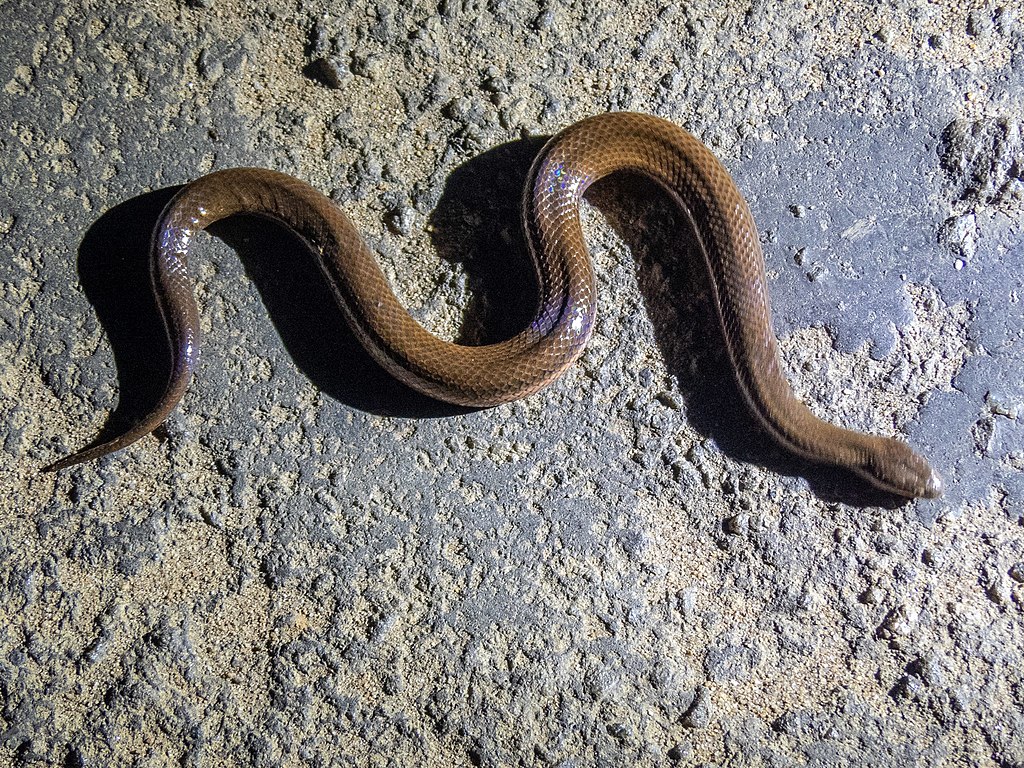
Unlike many other snake species that lay eggs, tentacled snakes have evolved a viviparous reproductive strategy, giving birth to fully-formed live young that are immediately capable of swimming and hunting. Mating typically occurs during the rainy season when water levels are highest, with females carrying developing embryos for approximately 5-6 months. A typical clutch consists of 5-13 young, with neonates measuring around 20 centimeters in length and already displaying the distinctive tentacles and body morphology of adults. The young snakes begin practicing their fishing technique almost immediately after birth, though their success rate improves significantly with experience. Tentacled snakes reach sexual maturity at approximately 2-3 years of age and can live for 10-15 years in the wild under favorable conditions. This reproductive strategy eliminates the vulnerability of eggs to aquatic predators and provides offspring with immediate survival capabilities in their specialized habitat.
Conservation Status and Threats
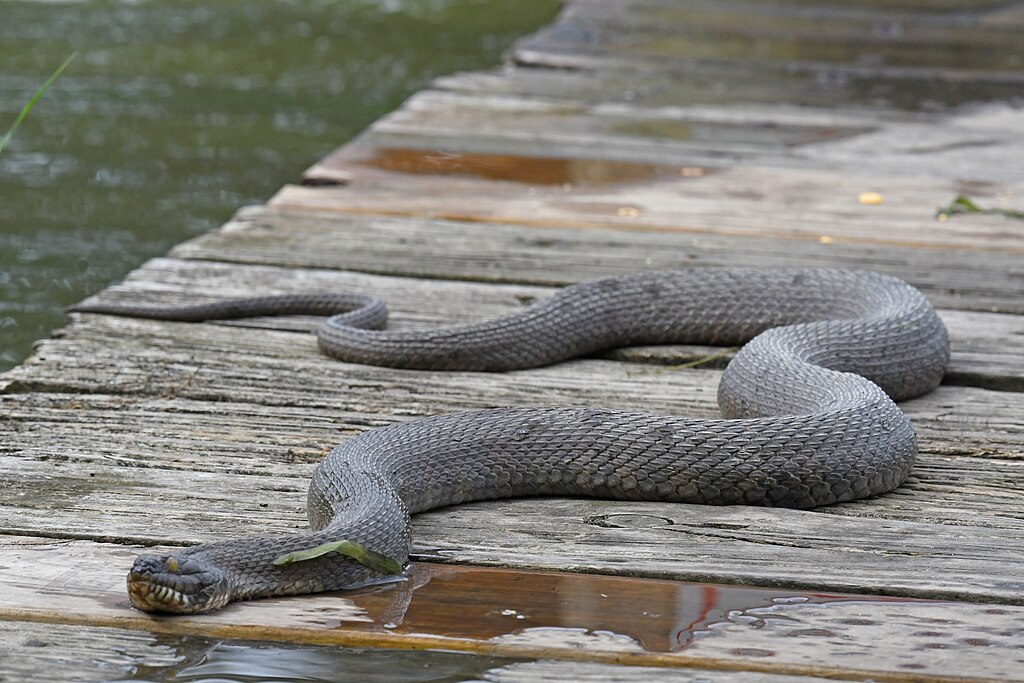
While not currently listed as endangered, tentacled snake populations face mounting pressures from habitat degradation and environmental change. The conversion of natural wetlands to agricultural land, particularly for intensive rice farming involving pesticides and water management practices, has significantly reduced suitable habitat throughout Southeast Asia. Water pollution from industrial sources and urban development further threatens the clean water ecosystems these specialized predators require. Additionally, collection for the exotic pet trade has impacted some local populations, though this remains a secondary concern compared to habitat loss. Climate change presents perhaps the most significant long-term threat, as altered precipitation patterns affect water levels in the seasonal wetlands these snakes inhabit. Conservation efforts currently focus on preserving remaining natural wetland habitats and implementing sustainable water management practices in agricultural areas where these unique snakes still persist.
Other Snake Species with Fishing Adaptations

While the tentacled snake represents the most specialized case of tail fishing behavior, several other snake species have independently evolved similar luring techniques. The North American cottonmouth (Agkistrodon piscivorus) has been documented using its yellowish tail tip as a lure to attract frogs and fish in shallow water, though this behavior is not as consistently observed as in the tentacled snake. Similarly, certain aquatic populations of garter snakes (Thamnophis spp.) exhibit rudimentary tail movements when hunting in water that appear to attract small fish. Perhaps the closest parallel exists in the South American water snake (Helicops leopardinus), which adopts a similar J-shaped posture and employs subtle tail movements to attract prey in Amazonian waterways. These examples of convergent evolution across different snake lineages highlight how similar ecological pressures can produce comparable behavioral adaptations, even among distantly related species occupying similar niches in different parts of the world.
Cultural Significance and Human Interactions
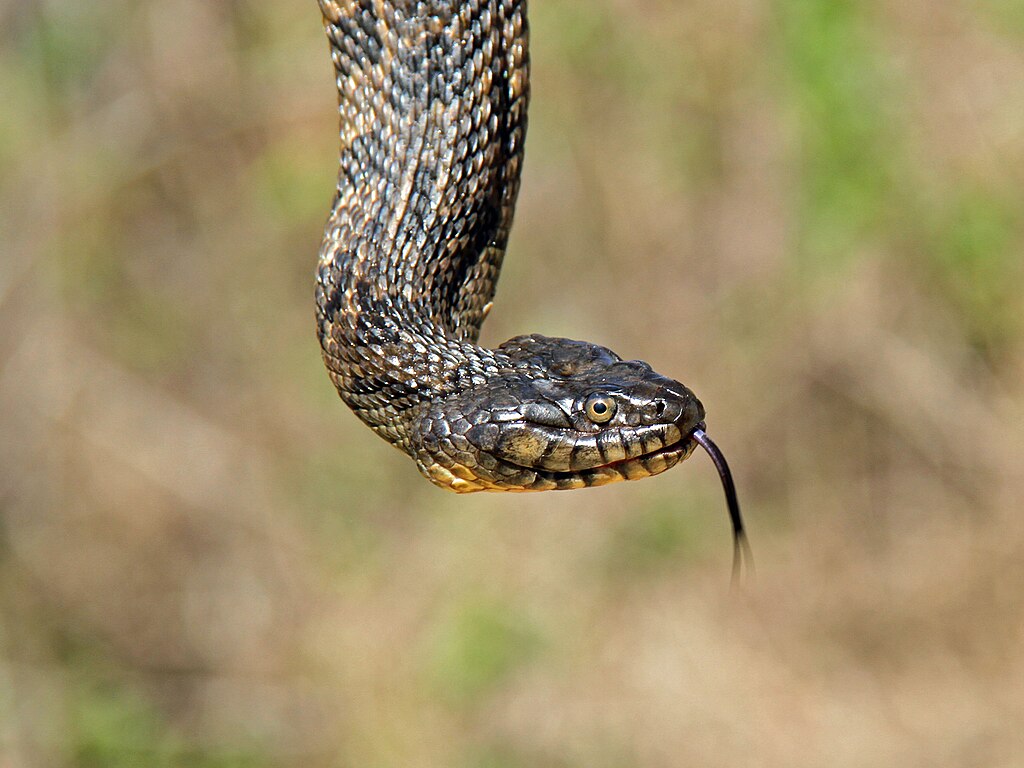
Throughout Southeast Asia, the tentacled snake holds various cultural significances that reflect human fascination with its unusual appearance and behavior. In Thai folklore, these snakes are sometimes considered harbingers of agricultural prosperity, their presence in rice paddies traditionally viewed as a sign of ecological health and promising harvests. Some traditional medicine practices in the region utilize dried tentacled snakes in remedies for respiratory ailments, though scientific evidence for efficacy is lacking. In modern times, these unusual reptiles have gained popularity in specialized aquarium keeping, though their specific care requirements and dietary specialization make them challenging to maintain in captivity. Wildlife researchers and behavioral biologists continue to study these remarkable snakes, with recent high-speed camera technologies revealing previously unknown details about their hunting strategies. The tentacled snake’s fishing behavior represents a compelling example of nature’s ingenuity that continues to inspire biomimetic research into predator-prey dynamics.
Scientific Research and Future Studies

Recent scientific investigations of tentacled snakes have opened new avenues for understanding specialized predation strategies in vertebrates. Using high-speed cinematography capturing over 1,000 frames per second, researchers have documented the precise timing between the snake’s initial movement, the fish’s escape response, and the snake’s predictive strike—all occurring within less than 30 milliseconds. Neurobiologists are particularly interested in how the snake’s brain processes this complex sequence and makes predictive calculations without the benefit of the sophisticated cerebral cortex found in mammals. Future research directions include investigating potential sensory specializations in the tentacles that might detect electrical fields generated by fish muscles, similar to capabilities found in sharks. Additionally, molecular biologists are exploring the genetic basis for the snake’s unique morphological features through comparative genomics. As climate change threatens their natural habitat, ecological studies tracking population dynamics and adaptation potential have also become increasingly important for conservation planning.
Conclusion
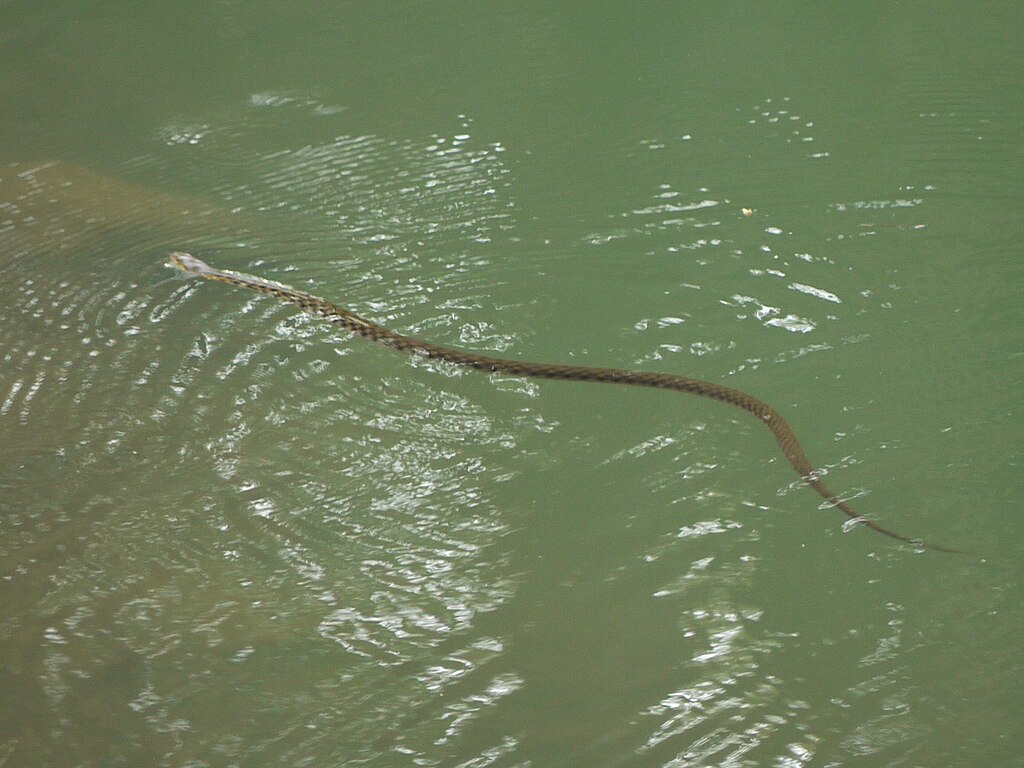
The tentacled snake stands as one of nature’s most specialized predators, with its fishing tail strategy representing a masterclass in evolutionary adaptation. From its unique anatomical features to its sophisticated predictive hunting technique, this remarkable reptile demonstrates how millions of years of natural selection can produce highly specialized solutions to the challenges of survival. As we continue to learn more about these fascinating creatures, they provide valuable insights into the complexity of predator-prey relationships and the remarkable diversity of hunting strategies in the animal kingdom. Yet their specialized nature also makes them vulnerable to environmental change, highlighting the importance of wetland conservation throughout Southeast Asia. The fishing snake reminds us that sometimes nature’s most remarkable innovations can be found in the most unexpected places—like the tail tip of an unassuming aquatic reptile quietly waiting for its next meal.





